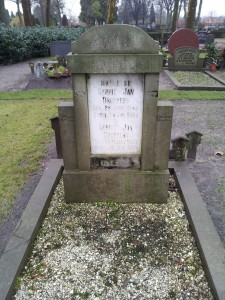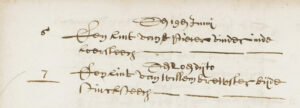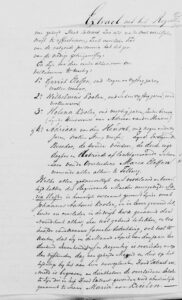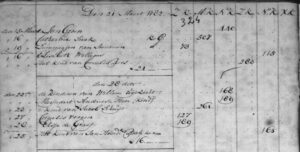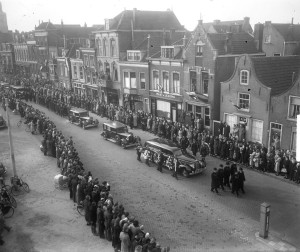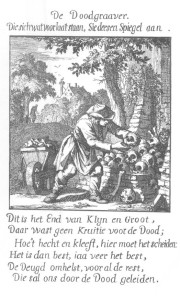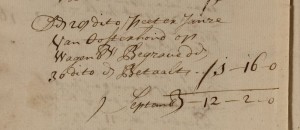Grafrechten are grave duties, the fees that have to be paid for a grave. Some churches or towns kept registers of these payments. They can act as a substitute for missing burial records. In most cemeteries, graves can only be leased, not bought. After the lease expires, the next of kin have to pay grave duties again or the grave will be cleared. … [Read more...]
Quick tip – Burials under name of husband or father
Many burial registers and related registers like burial fees registers recorded entries under the name of the head of household. Entries might be for the wife of Jan Claesz, or the child of Pieter Willems. If you cannot find a married woman in a burial register, check under her husband's name. If you cannot find an unmarried person, such as a minor child, in a burial register, check under their father's name. … [Read more...]
Case study: incorrectly recorded burial of Maria Elissen
My ancestor Maria Elissen was the wife of Johannes Antonij Koolen. I knew she must have died between 1789, when her youngest child was born, and 24 December 1798, when her husband was called a widower when he died.1 The burial register for Tilburg for this period is indexed and appears to be complete. However, no burial was found for Maria Elissen.2 The only burial for a Maria, wife of Jan Koolen was Maria van Keulen, who was buried on 15 April 1795, the wife of Jan Koolen.3 Could this have … [Read more...]
Quick tip – Use Different Types of Death Records
In the period after 1811, the civil registration death records are the most reliable and informative records to use. In the period before 1811, there are different types of records that can act as substitutes for death records: Burial records kept by the churches Account books by the churches or deacons where fees are recorded for renting a pall, ringing the bells, or paying for the grave. Records of the death duties levied by civil authorities. Not all records exists in every … [Read more...]
Dutch term – Beste kleed
In burial records, you will sometimes see the reference to the "beste kleed" or "slechtste kleed." To someone unfamiliar with Dutch or using an automatic translator, that may look like somebody was buried in their best or worst clothes, but in fact the term refers to the lijkkleed or burial pall. The "beste kleed" was the best and most expensive pall. The "slechtste kleed" was the worst and cheapest pall. Many burial records were created as account books, to keep track of the income from … [Read more...]
Dutch term – Begrafenis
A begrafenis is a burial. Before 1811, the church records of burials are often the best source for the burial date. Some registers include the death date as well. After 1811, death records of the civil registration show when a person died, but they do not contain information about the burial. That information can sometimes be found in family announcements in newspapers or in the burial administration of the churches. … [Read more...]
Dutch term – Begraven
Begraven means to bury. People were usually buried two to five days after they died, sooner if there was an epidemic. Burials were recorded in the Begraafboek (burial book). … [Read more...]
Dutch term: begraafboek
A begraafboek is a burial book. Begraafboeken are the primary source of information about deaths before 1811. They can be found at the archives in the capitals of the provinces. Many burial books have been digitized and are available on Familysearch.org. … [Read more...]
